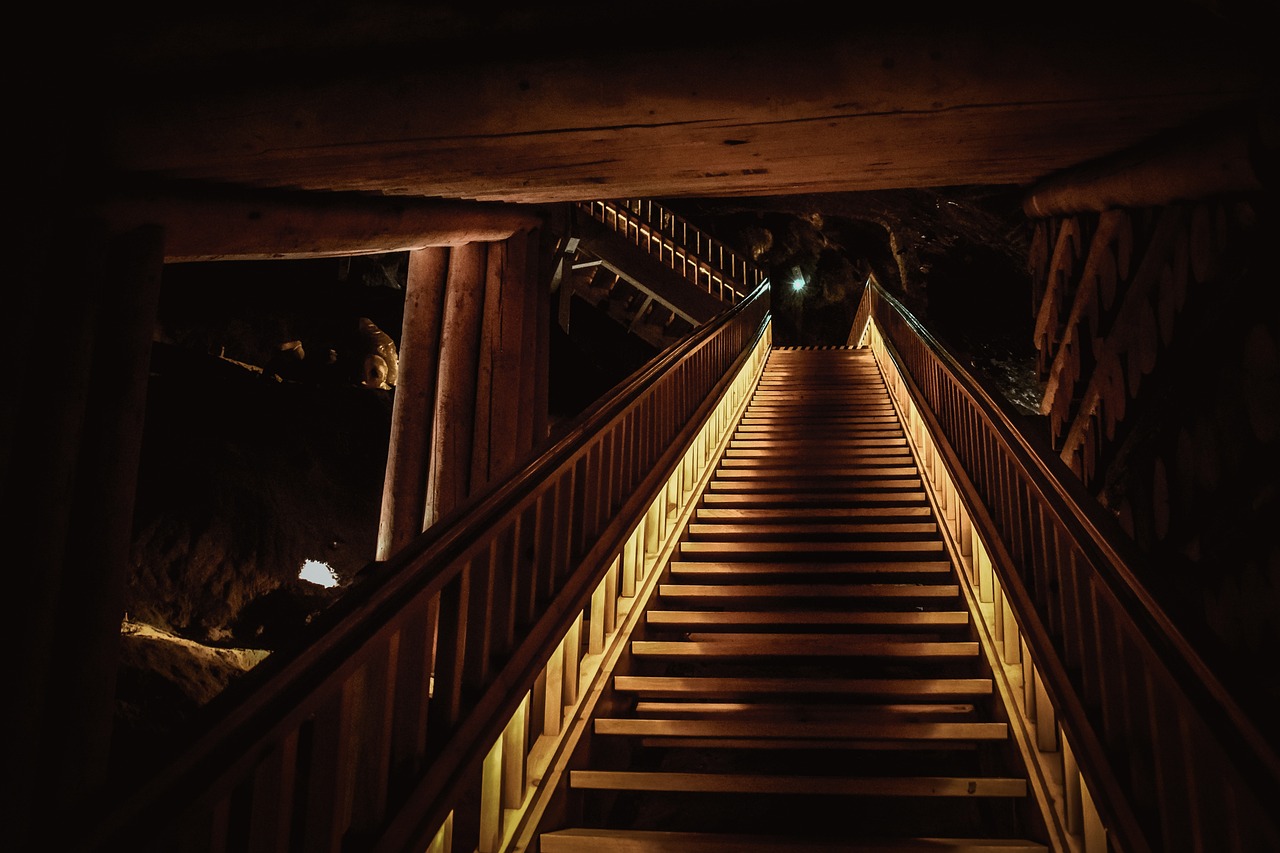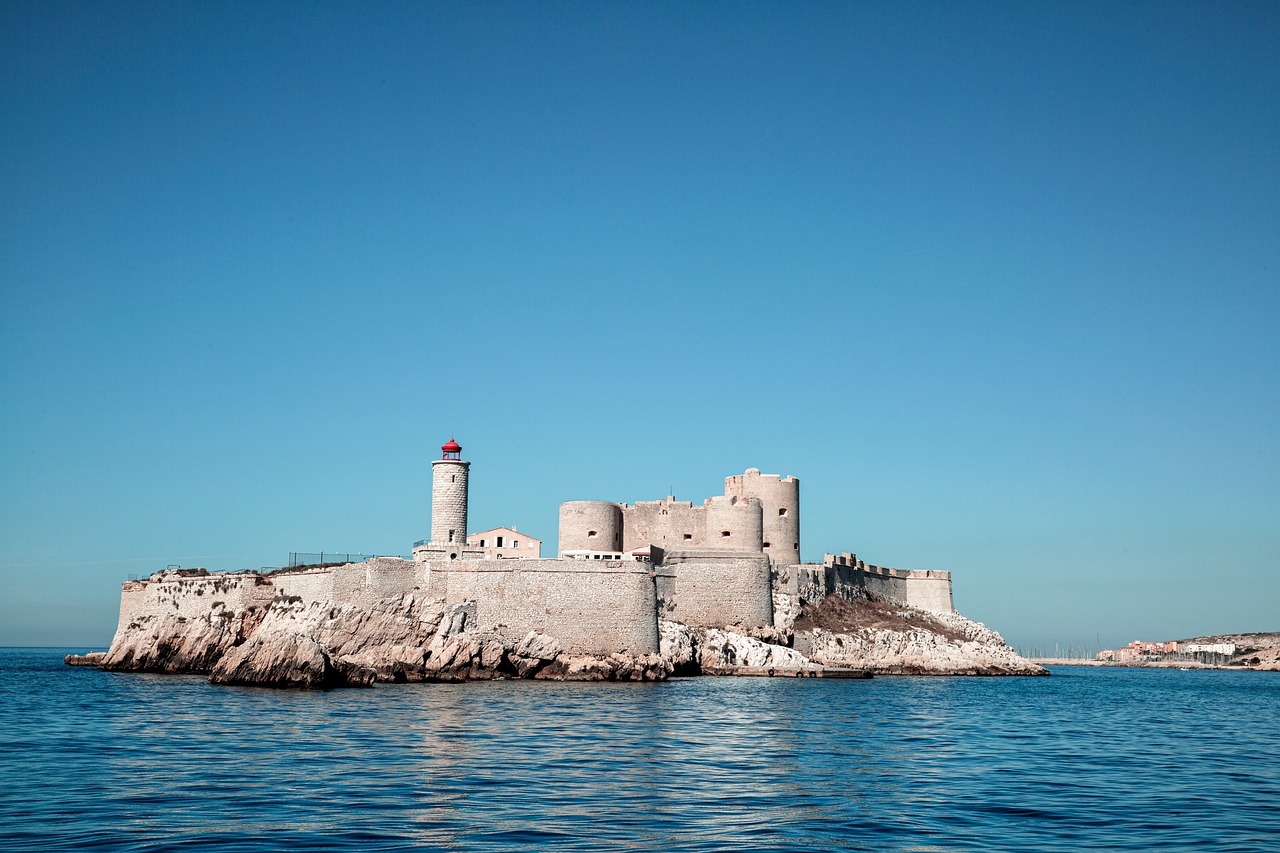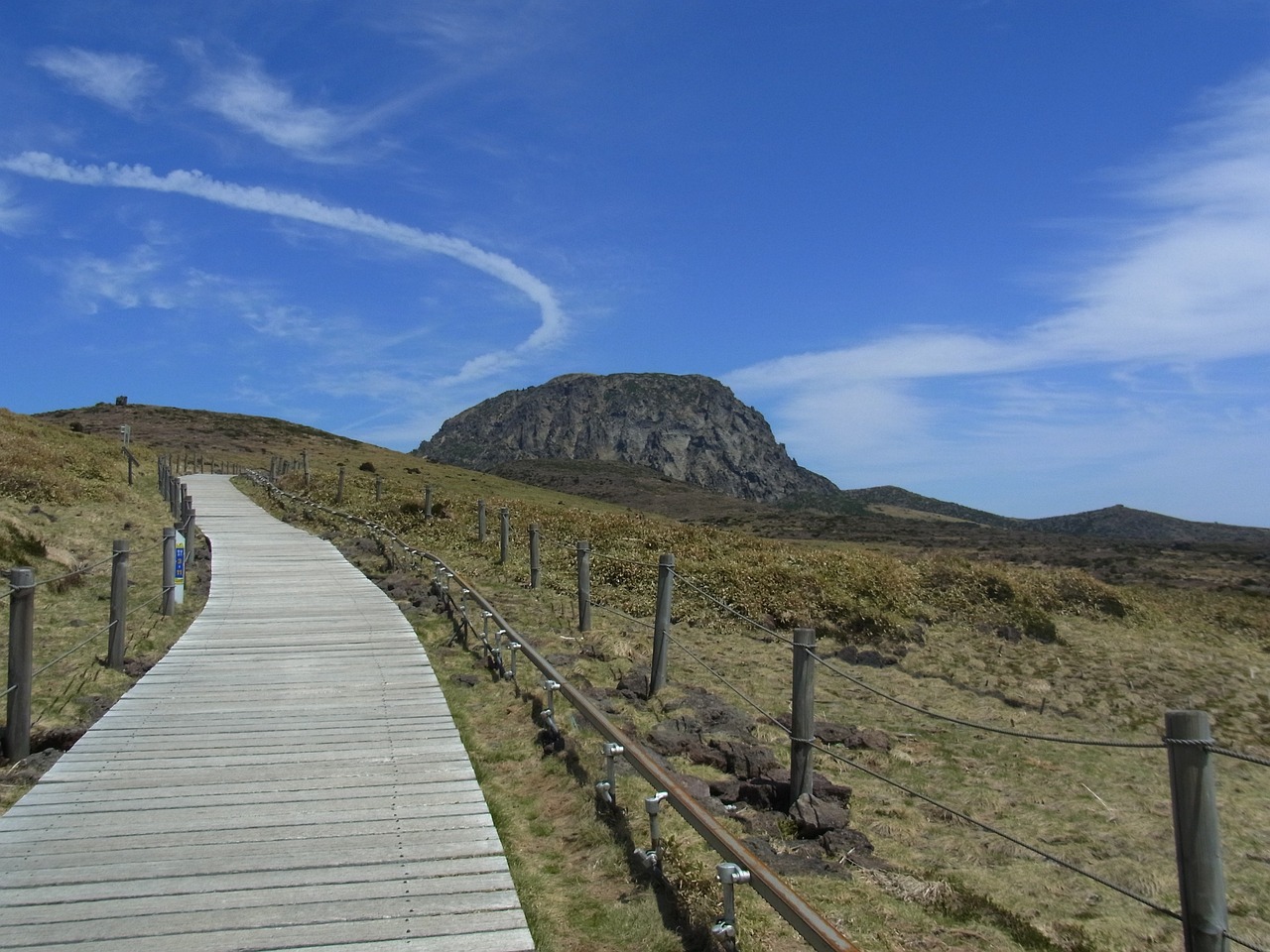How to Create Meaningful Heritage Experiences for Visitors
Creating meaningful heritage experiences for visitors goes beyond just showcasing historical artifacts or monuments. It involves crafting immersive and engaging encounters that resonate with individuals on a personal level, leaving a lasting impact that sparks curiosity and appreciation for the past.
By understanding the diverse expectations and motivations of visitors, heritage sites can tailor their experiences to cater to a wide range of interests. Whether visitors seek educational insights, emotional connections, or simply a sense of wonder, customizing the experience can enhance satisfaction and engagement.
Interpreting the cultural significance of heritage sites is crucial in conveying their value to visitors. By highlighting the stories, traditions, and historical context behind each site, visitors can develop a deeper appreciation for the cultural heritage preserved within these spaces.
Technology plays a vital role in creating immersive experiences that captivate modern audiences. Augmented reality, interactive exhibits, and digital storytelling can bring history to life in innovative ways, making the past more accessible and engaging for visitors of all ages.
Community involvement and collaboration are key in preserving heritage sites authentically. By engaging with local communities, heritage sites can incorporate diverse perspectives and narratives, creating a more inclusive and representative experience for visitors.
Ensuring the long-term preservation and sustainability of heritage sites is essential for maintaining their cultural value. Balancing visitor experiences with conservation efforts is crucial in safeguarding these sites for future generations to enjoy and learn from.
Educational programs, workshops, and guided tours offer visitors in-depth insights into the history and significance of heritage sites. By providing opportunities for learning and discovery, these initiatives can enrich visitor experiences and foster a deeper connection with the past.
Creative storytelling and narrative design are powerful tools in shaping memorable heritage experiences. By crafting compelling narratives that evoke emotions and spark imagination, heritage sites can create impactful encounters that resonate with visitors long after their visit.
Measuring the success of heritage experiences and continuously improving them is essential for enhancing visitor satisfaction. By collecting and analyzing feedback, heritage sites can identify areas for growth and refinement, ensuring that each visitor's experience is meaningful and fulfilling.

Understanding Visitor Expectations
Exploring strategies and methods to enhance visitor engagement and satisfaction at heritage sites through meaningful experiences that connect them with the history and culture preserved at these locations.
When visitors step into a heritage site, they come with a myriad of expectations and motivations. Some seek to delve deep into the historical significance, while others are more interested in the cultural aspects. Understanding these diverse expectations is crucial in tailoring experiences that cater to the unique needs and interests of each visitor. By acknowledging and addressing these varying motivations, heritage sites can create personalized encounters that leave a lasting impact.

Interpreting Cultural Significance
When it comes to heritage sites, understanding and interpreting their cultural significance is paramount. It's not just about showcasing historical artifacts or ancient ruins; it's about delving into the stories and traditions that shape a community's identity. By presenting the cultural significance of these sites in a meaningful way, visitors can truly connect with the past and gain a deeper appreciation for the heritage they are experiencing.
One effective way to interpret cultural significance is through immersive experiences that transport visitors back in time. Imagine walking through a recreated ancient marketplace bustling with activity, or listening to traditional music that echoes through the centuries. These experiences can evoke emotions and create lasting memories that resonate with visitors long after they leave the site.
Additionally, storytelling plays a crucial role in interpreting cultural significance. By weaving narratives that highlight the struggles, triumphs, and everyday life of past generations, visitors can empathize with the people who once inhabited these sites. Through creative storytelling techniques, such as audio guides or live performances, the history and culture of the site come to life in a way that captivates and educates.
Furthermore, incorporating local perspectives and voices into the interpretation of cultural significance adds a layer of authenticity and richness to the visitor experience. By involving community members in the storytelling process or showcasing their art and traditions, visitors can gain a more holistic understanding of the heritage site and its importance to the local population.

Utilizing Technology for Engagement
Technology plays a vital role in enhancing visitor engagement at heritage sites. By leveraging tools like augmented reality (AR) and interactive exhibits, heritage sites can offer immersive experiences that captivate visitors and deepen their understanding of history and culture. AR, for example, allows visitors to superimpose digital content onto the real world, bringing historical events to life right before their eyes. Interactive exhibits, on the other hand, enable visitors to actively participate in the learning process, making the experience more engaging and memorable.
Additionally, mobile apps can provide visitors with on-demand access to information about the site, its significance, and related stories. These apps can offer interactive maps, audio guides, and multimedia content, allowing visitors to explore at their own pace while still receiving valuable insights. By integrating technology seamlessly into the visitor experience, heritage sites can cater to the preferences of modern audiences who are accustomed to digital interactions.
Furthermore, virtual reality (VR) experiences can transport visitors to different time periods or locations, offering a unique perspective on the site's history. Through VR simulations, visitors can witness historical events unfold, walk through ancient buildings, or interact with virtual artifacts. This innovative approach not only enhances engagement but also fosters a sense of connection with the past, making the heritage experience more personal and meaningful.

Community Involvement and Collaboration
Community involvement and collaboration play a crucial role in the preservation and promotion of heritage sites. By engaging local communities in the efforts to safeguard these valuable locations, a sense of ownership and pride is instilled, leading to more authentic and inclusive experiences for visitors.
Collaborating with local residents, historians, and experts allows for a multifaceted approach to heritage preservation. Their insights and knowledge contribute to a richer understanding of the site's history and cultural significance, enabling visitors to appreciate the depth and complexity of the heritage on display.
Furthermore, involving the community in the development of interpretive materials and programs ensures that diverse perspectives are represented. This collaborative effort results in experiences that are not only educational but also respectful of the community's heritage and traditions.
Through partnerships with local schools, cultural organizations, and indigenous communities, heritage sites can offer a wide range of programming that caters to different audiences. This diversity of offerings enhances visitor engagement and fosters a sense of connection to the site and its stories.
By fostering a sense of shared responsibility for heritage preservation, community involvement and collaboration create a sustainable model for the continued enjoyment and protection of these valuable cultural assets. Visitors are not just passive observers but active participants in the ongoing narrative of the heritage site.

Preservation and Sustainability
Preservation and sustainability play a crucial role in ensuring the longevity and cultural significance of heritage sites. It is essential to strike a balance between providing enriching experiences for visitors and safeguarding these sites for future generations. Preservation involves implementing measures to protect the physical structures, artifacts, and natural surroundings of heritage sites from deterioration and external threats. Sustainability, on the other hand, focuses on managing the site in a way that minimizes environmental impact and ensures its continued existence.
One effective strategy for achieving preservation and sustainability goals is through the implementation of conservation practices. This may include regular maintenance of buildings and structures, monitoring environmental conditions to prevent damage, and implementing sustainable practices such as energy-efficient lighting and waste management. By prioritizing conservation efforts, heritage sites can maintain their authenticity and cultural value while minimizing their ecological footprint.
Furthermore, community involvement is key to the preservation and sustainability of heritage sites. Engaging local communities in conservation efforts not only fosters a sense of ownership and pride but also ensures that their knowledge and expertise are leveraged in the preservation process. Collaborating with local stakeholders can lead to the development of innovative solutions for sustainable management and the establishment of practices that align with community values and traditions.
When considering the sustainability of heritage sites, it is also important to address issues of overtourism and visitor impact. Implementing visitor management strategies, such as limiting the number of daily visitors or promoting off-peak seasons, can help reduce the strain on fragile sites and mitigate the negative effects of overcrowding. Additionally, educating visitors about the importance of responsible tourism practices can foster a culture of respect and appreciation for heritage sites, encouraging sustainable visitation patterns.
In summary, preservation and sustainability are integral components of ensuring the long-term viability and cultural significance of heritage sites. By implementing conservation practices, engaging local communities, and promoting responsible tourism, these sites can be preserved for future generations to enjoy while maintaining their authenticity and value.

Educational Programs and Workshops
Exploring strategies and methods to enhance visitor engagement and satisfaction at heritage sites through meaningful experiences that connect them with the history and culture preserved at these locations.
Educational programs and workshops play a crucial role in enhancing visitor learning and engagement at heritage sites. By providing in-depth insights into the history and significance of these locations, these programs offer a unique opportunity for visitors to immerse themselves in the cultural richness of the site.
Through educational programs, visitors can gain a deeper understanding of the heritage site's historical context, traditions, and significance. Workshops, on the other hand, provide a hands-on experience that allows visitors to actively participate in learning activities, such as traditional crafts, cooking demonstrations, or historical reenactments.
These programs not only educate visitors but also foster a sense of connection and appreciation for the heritage site. By engaging both the mind and the hands, educational programs and workshops create memorable experiences that leave a lasting impact on visitors, inspiring them to explore further and delve deeper into the site's history.
Furthermore, educational programs and workshops can cater to a wide range of audiences, from school groups and families to individual visitors and tourists. By tailoring the content and format of these programs to meet the diverse needs and interests of different groups, heritage sites can ensure that every visitor has a meaningful and enriching experience.
Overall, educational programs and workshops are powerful tools for promoting visitor engagement, fostering learning, and preserving the cultural heritage of sites for future generations. By offering interactive and educational experiences, heritage sites can create a dynamic and immersive environment that captivates visitors and instills a sense of appreciation for the past.

Creative Storytelling and Narrative Design
Creative storytelling and narrative design play a crucial role in shaping the visitor experience at heritage sites. Imagine walking through the halls of a historic castle, guided by a captivating story that brings the past to life before your eyes. The power of storytelling lies in its ability to evoke emotions, create connections, and leave a lasting impact on visitors.
By weaving together historical facts, personal anecdotes, and cultural insights, storytellers can transport visitors to different eras and immerse them in the rich tapestry of heritage. Through creative storytelling, visitors are not mere spectators but active participants in the narrative, engaging their senses and imagination to fully experience the history and significance of the site.
Moreover, narrative design plays a key role in structuring the storytelling experience to ensure coherence, flow, and impact. Just like a well-crafted novel or a compelling movie, the narrative design of heritage experiences guides visitors through a journey of discovery, revelation, and reflection.
Visual elements, sound effects, interactive displays, and multi-sensory experiences are all part of the narrative design toolkit that enhances the storytelling process. By appealing to different learning styles and preferences, narrative design creates a dynamic and engaging environment that caters to a diverse range of visitors.
Ultimately, creative storytelling and narrative design transform heritage sites into living, breathing spaces where history comes alive, traditions are celebrated, and memories are made. By harnessing the power of storytelling, heritage sites can create meaningful and unforgettable experiences that resonate with visitors long after they have left.

Measuring Success and Continuous Improvement
When it comes to heritage experiences, measuring success goes beyond just counting the number of visitors. It involves delving into the impact these experiences have on the individuals who engage with them. By collecting and analyzing visitor feedback, heritage sites can gain valuable insights into what aspects of their offerings resonate the most with visitors and what areas need improvement.
One effective way to measure success is through the implementation of visitor surveys and feedback forms. These tools allow heritage sites to gather quantitative and qualitative data on visitor satisfaction, preferences, and suggestions for enhancement. By carefully reviewing this feedback, sites can identify trends, strengths, and weaknesses in their visitor experiences, enabling them to make informed decisions for continuous improvement.
Moreover, tracking key performance indicators (KPIs) can provide a comprehensive overview of the success of heritage experiences. Metrics such as visitor retention rates, average dwell time, and engagement levels with interactive exhibits can offer valuable insights into the effectiveness of the site's offerings. By setting clear KPIs and regularly monitoring them, heritage sites can gauge their performance and make data-driven adjustments to optimize visitor engagement.
Continuous improvement is a fundamental aspect of creating meaningful heritage experiences. It involves an ongoing process of refinement and innovation to ensure that visitors are consistently delighted and engaged. By staying attuned to visitor feedback, industry trends, and technological advancements, heritage sites can adapt and evolve their offerings to meet the changing expectations of their audience.
Furthermore, collaboration with experts in visitor experience design and heritage interpretation can provide fresh perspectives and innovative ideas for enhancing the overall quality of heritage experiences. By seeking external input and staying open to new approaches, heritage sites can foster a culture of creativity and excellence that drives continuous improvement and sets them apart as leaders in the field.
Frequently Asked Questions
- What are some common visitor expectations at heritage sites?
Visitors to heritage sites often expect a blend of education and entertainment. They seek to learn about the history and culture of the site while also enjoying a memorable experience.
- How can technology enhance visitor engagement at heritage sites?
Technology, such as augmented reality and interactive exhibits, can create immersive experiences that bring history to life. It helps visitors connect with the past in a dynamic and engaging way.
- Why is community involvement important in heritage preservation?
Community involvement ensures that heritage sites are preserved authentically and inclusively. Local perspectives and contributions enrich the visitor experience and help in sustaining the site for future generations.
- What role does storytelling play in creating meaningful heritage experiences?
Storytelling is crucial in crafting experiences that resonate emotionally with visitors. It helps in conveying the significance of the site's history and culture in a way that leaves a lasting impact.
- How can heritage sites measure success and continuously improve visitor experiences?
By evaluating visitor feedback and measuring the impact of experiences, heritage sites can identify areas for improvement. Implementing changes based on this feedback ensures ongoing enhancement of visitor satisfaction and engagement.



















